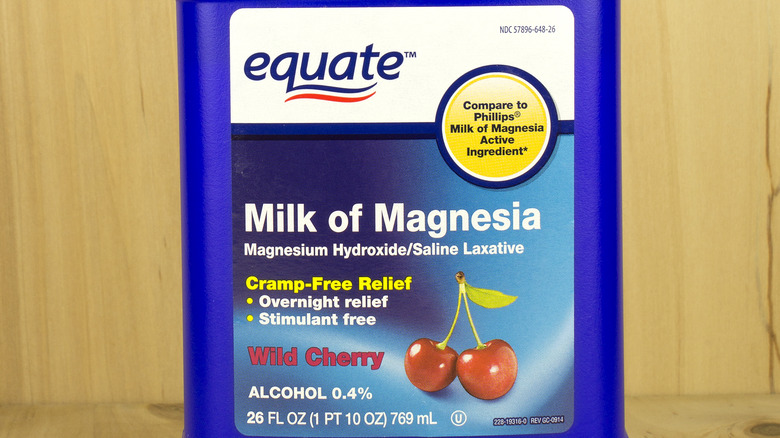How Milk Of Magnesia Can Help With Constipation
For many people who have constipation or difficulty making a bowel movement, Milk of Magnesia can be a game-changer. But what exactly is it and how does it work? Also known as magnesium hydroxide, Milk of Magnesia is an over-the-counter (OTC) oral laxative and effective short-term treatment for constipation (via Healthline). While constipation can make your stools hard and dry, this product works by drawing water into your stools, making them soft and easier to pass.
As a result, Milk of Magnesia can temporarily relieve constipation by softening your stools and increasing your bowel movements. As a type of saline laxative, it's meant to be fast-acting. This means that you're likely to have a bowel movement within 6 hours after taking it. However, sometimes bowel movements can happen as soon as 30 minutes later. Milk of Magnesia is meant to provide only short-term relief and should not be used for chronic constipation.
How to take milk of magnesia
If you're experiencing temporary constipation, you can take Milk of Magnesia as a tablet or by drinking it as a syrup or mixed-powder form. It's important to get the dosage right depending on your age and the severity of your constipation. According to Harvard Health Publishing, taking too much of it can result in unwanted side effects such as diarrhea.
The U.S. National Library of Medicine recommends 2 to 4 tablespoons per dose for adults and children over the age of 12, depending on their unique situation. Children between the ages of 6 and 11 years old can be given from 1 to 2 tablespoons per dose, and parents should consult a pediatrician before giving milk of magnesia to children under the age of six. No more than the daily recommended dose should be taken in a 24 hour period, and it's best to take the dose at bedtime. You should drink an 8-ounce glass of water with each dose.


